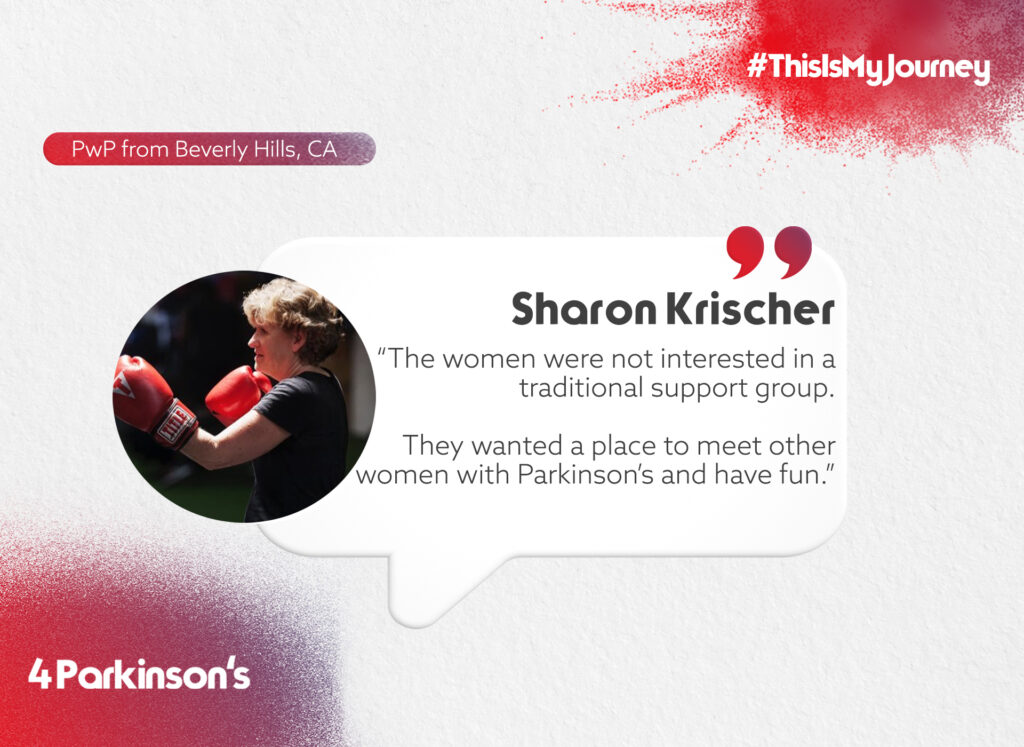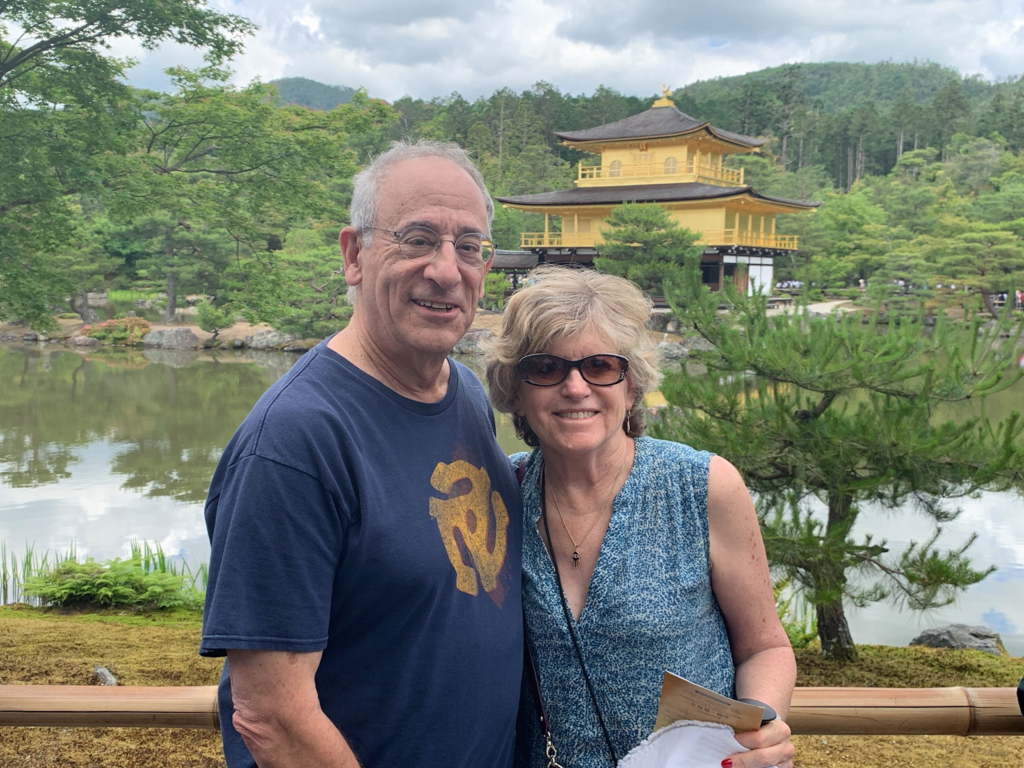

She’s Sharon
In 2009, Sharon Krischer received a Parkinson's Disease diagnosis. Since then, she's dedicated herself to supporting others affected by the condition, striving to help them find a way forward.
She created Twitchy Woman to share ideas and solutions with those impacted by Parkinson's. It's acclaimed by Everyday Health, Healthline, Stanford University, and others as a top Parkinson’s blog. Every month, she hosts a free Zoom series exclusively for fellow "Twitchy Women" with Parkinson’s Disease.
Sharon incorporates daily exercise as a crucial element in managing Parkinson's. She played tennis for many years (until the pandemic); she is currently an active participant in yoga, table tennis, and (occasionally) pickle ball classes; she also travels extensively, exploring various parts of the world.
Residing in Beverly Hills, CA, Sharon is surrounded by the unwavering support of her husband, Joel. Together, they cherish their three daughters and four grandchildren.
In our interview with Sharon, we discussed her journey as a strong advocate for individuals affected by Parkinson's disease. Here are the details of our interview:
Since your diagnosis in 2009, you've become a powerful advocate for individuals affected by Parkinson's. How has your journey influenced your advocacy work, and what message do you aim to convey to others facing similar challenges?
I like to call myself an Accidental Advocate. When I was diagnosed in 2009, there were not many resources available for people with Parkinson's. Because I was diagnosed with breast cancer and PD in the same month, treating breast cancer was my priority. I kept my PD diagnosis hidden for quite a long time after. However, about four years after my diagnosis, people started asking me to talk to someone they knew who was just diagnosed.
I had not even gone public about my Parkinson's yet, but people found out. By then, I had done quite a lot of research and decided that writing a blog was the best way to share what I had learned. I never planned to be writing as long as I have (9 years), nor did I plan to be an advocate for People with Parkinson's.
About a year later, another blogger told me about a symposium called Women and Parkinson's Initiative that the Parkinson's Disease Foundation was planning. I applied and was one of the 25 women who attended the 3-day seminar. At the end of the. Program, we were asked to do something with our new knowledge when we returned home. I planned a meeting to bring together women with PD who I knew in the Los Angeles area. The women were not interested in a traditional support group. They wanted a place to meet other women with PD and have fun.
The group became activity-driven instead of the conventional support group model. My involvement in other organisations at the leadership level prepared me to move forward with my blog and the programming I planned for the women. We were among the first to go online with programs when the pandemic hit, which continues today and beyond.
My main goal since the beginning has been to help other people with Parkinson's learn how to live better with the disease.
Twitchy Woman started as a platform to exchange ideas and solutions for those affected by Parkinson's. How has this community evolved, and what impact do you hope it continues to have on the lives of your followers?
I believe in encouraging others to learn to be volunteer leaders. And if there is an unmet need in the community, why not see if we can fill that need? Since I began with my blog and the women's programs, two women approached me about starting a chat group on Zoom for women with PD. They now have a loyal following for the chat session. Because of the pandemic, it soon became clear that newly diagnosed women could not find others to talk to about living with PD since all Parkinson's exercise programs had been cancelled. We started our Peer Mentoring program with ten volunteers who developed the program within three months. We have matched over 150 women with mentors in the past three years. I hope that I will be able to continue developing programs that fill the needs of people with Parkinson's.

Daily exercise plays a crucial role in your approach to living with Parkinson's. Could you share more about how activities like tennis, yoga, and boxing contribute to your well-being, and what advice do you have for others looking to incorporate exercise into their routine?
My activities have evolved, in part because of the pandemic. I have continued to exercise regularly, riding a Peloton Bike, doing yoga and table Tennis, and recently started playing Pickleball. With exercise, you must do something you like. Otherwise, you will find every excuse not to do it. It is also important not to do the same exercise every day. Alternate types of exercise, try for at least 30 minutes a day and get your heart rate up!
Living in Beverly Hills with your supportive husband, Joel, and having a rich family life, how has Parkinson's journey shaped your perspective on family, relationships, and maintaining a fulfilling lifestyle?
I have been fortunate to have supportive family and friends nearby who don't see me as a different person than I was before Parkinson's. We have a pretty full social life. My husband retired 11 years ago. I was able to travel with him on business before that, and we have been able to travel even more extensively since then, going on many of those trips with friends. We want to do whatever we can while we still can do it.
Join our community in spreading hope and strength. Tell us your unique journey with Parkinson's to uplift and empower others.